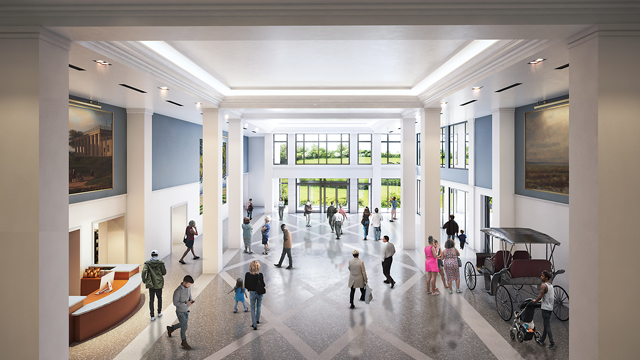Witness transformative and inclusive history in action at VMHC! The newly renovated Virginia history museum on Arthur Ashe Boulevard is not to be missed.
As a transplant to Richmond, my first introduction to the Virginia Museum of History and Culture (VMHC) took place in 2018 at the Fresh Paint exhibition, approximately ten years after moving here. In all honesty, the only reason we went then was because my husband Hamilton and other artist friends were part of the exhibit, a collection of large-scale murals as diverse and interesting as the artists who created them.
I remember being excited about Fresh Paint because the artists selected objects of interest to them from the museum’s extensive collections, learned about the object’s story, and created inspirational works of art. There were a range of fascinating stories, and I don’t think many of the visitors, myself included, were familiar with them.
Hamilton focused on the United States Colored Troops. These Black Union soldiers not only fought against the Confederacy, but dealt with distrust, discrimination, and violence from white soldiers who were supposed to be allies and comrades. Although some Blacks, from the North and South, were classified as free, Hamilton’s mural highlighted that African Americans were engaged in a war where, even in victory, freedom would never be completely theirs.
As a whole, this exhibition – a first for VMHC – allowed visitors to dig deeper into the stories and the humanity behind the artifacts of the museum. With Fresh Paint, a new standard was set for how the museum would welcome people and ideas into its space.
After that visit, the large stone building, which had seemed daunting and members only-ish from where it stood on the Boulevard, came alive.
Our next family visit happened in June 2019 when we attended the renaming and dedication ceremony of Arthur Ashe Boulevard. On this day, thousands gathered and a single-day attendance record was set. Black excellence was on full display starting on the front lawn and flowing into the halls of VMHC. Here, the public was invited to experience Determined: The 400-Year Struggle for Black Equality, an exhibition that examined centuries of history of Black people in Virginia from 1619 to 2020, the pivotal role Black Americans have played in shaping America’s national identity and culture, and the key Virginians and Virginia events that have defined the meaning of American democracy, equality, and justice. One of those Virginians was Richmond’s own Arthur Ashe.
Now it was clear that VMHC had made some changes, and not in name only – it had been known previously as the Virginia Historical Society – but tangible and thoughtful changes in its identity and programming that would help the history institution evolve into a more inviting and accessible place for all families.
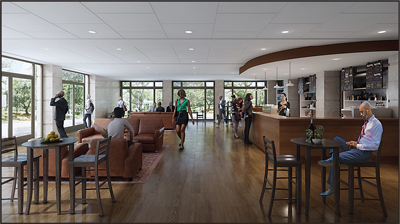
New Direction, New Leadership at VMHC
The changes the community began to see in 2018 didn’t happen by accident. There was an intentional search for new leadership to guide VMHC into its next phase of life that would move it from its founding concept of historical society to the museum of history and culture it is today.
Jamie Bosket was named VMHC’s president and CEO in February 2017. The youngest museum director ever in Richmond’s history, Bosket has taken it all in stride as a dream opportunity to reimagine the institution, which was designated as the state historical society of the Commonwealth of Virginia in 2004.
“It was part of an early idea, and a desire from the leadership of this place to find a way for us to realize more of our potential to serve more of our community,” says Bosket about the mission to engage with diverse populations across Virginia. “And that really is about welcoming all Virginians, and reflecting all Virginians.”
History of the History Institution
VMHC is owned and operated by the Virginia Historical Society, a private, nonprofit organization that was established in 1831. The society is the oldest cultural organization in Virginia and one of the oldest and most distinguished history organizations in the nation.
In 1893, the Historical Society established its first physical home at 707 East Franklin Street in the Lee House. In 1946, the society moved to its current building, which was referred to as the Battle Abbey at the time.
The next few decades saw continual growth of the collections and the facility, including major expansions in 1998 and 2006. Today, the museum is in the final stages of another exciting renovation. In 2020, as many public gathering places watched their visitation drop off, VMHC leadership fast-tracked plans for the expansion, which had been slated for 2022 through 2024, to take advantage of pandemic down-time.
As the effects of the pandemic have waned and we gather together again, it’s a gift to the community to celebrate a grand re-opening of a space that has been intentional in its redesign to be more welcoming.
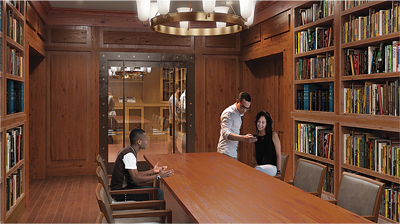
Building Up (Not Out) at VMHC
The latest upgrade touches every space and surface of the museum. There’s a newly designed entrance hall, enhanced green space, a campus connector between VMHC and VMFA, new café and museum shop, event space, new library, new community rooms, and new gallery spaces that display – my favorite! – family-focused exhibits.
Perhaps one of the most interesting things about this expansion is that it happened without expanding the footprint of the building. While many museums might add a new wing, VMHC has built vertically – on top of the existing footprint. From my sneak peek, I think it was a brilliant decision, as it has created beautiful, open, and welcoming spaces that are filled with light.
“We made the decision early on that we weren’t going to grow the ground footprint by a single square foot. We were going to make better use of the complex facility we had, which was built over five generations spanning 110 years,” Bosket says.
From the new two-story entrance, to the refresh and expansion of the exhibition spaces by half, to the updated kid-friendly gallery space, it’s clear that renovations were made with a new understanding and vision for museum visitors.
“It is about architecture, because there were things that we wanted this building to do for us that it just wasn’t or couldn’t do before. But it’s also so much more than just architecture,” says Bosket. “We needed a place that was bright and welcoming and friendly and comfortable – that would match where we were as a staff emotionally, aspirationally, and where we were as an institution with our desire for progress and evolution.”
It starts in Commonwealth Hall, the space where guests will enter and immediately see larger pieces from the vast collection of Virginia artifacts, like the prestigious Kline Kar from 1918 that was owned by the Black businessman, philanthropist, and civic leader A.D. Price. This is one of two surviving automobiles made by the Kline Motor Car Company of Richmond (which was located on N. Arthur Ashe Boulevard). There’s also a mid-1900s restored plane from an amusement park kiddie ride. In this space, visitors can wait on friends or family members to arrive (or make those inevitable bathroom runs with the kids) before jumping into Virginia history.
The next stage of the journey takes you to the second floor where the Orientation Hall primes visitors to think about how history impacts their lives. On a large screen, the film Imagine Virginia gives visitors an overview of the human and natural history they can expect to see throughout their experience.
Andrew Talkov, VMHC’s senior director of curatorial affairs, says the film uses sound and innovative projection technology to lead visitors into the rest of the museum and helps them think about how ideas engage with the past and connect to the present.
Talkov, who has been with VMHC for fifteen years, urges families to look at history using a broad lens. “History can motivate people to explore and be inventive and creative,” says Talkov. “Ultimately, it’s about how history – both the tragedies of our history and the triumphs of our history – can inspire us to create a better tomorrow,” says Talkov. “And knowing about the past supports all of those activities that matter to everyone every day.”
There are many new exhibits and experiences for families to explore including: Our Commonwealth, Views on Virginia, History Matters, Treasures of Virginia, and Virginia: As Far as You Can Imagine.
Housed among the permanent exhibitions will be space for short-term exhibitions. First up, look for American Democracy: A Great Leap of Faith. The exhibit examines our government’s founding, the continuing story of America’s bold experiment, and the many ways we have voted, protested, and shaped the evolution of this nation.
On tap for August is Cheers, Virginia! This one explores alcohol crafting and consumption practices in Virginia across time and the unique stories of Virginia alcohol makers and their roles as community partners and advocates.
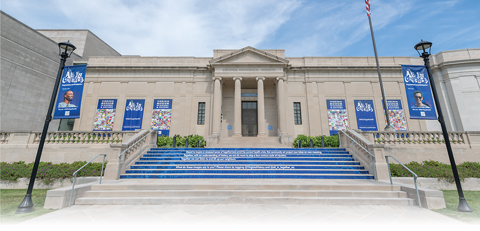
Representing All of Virginia at VMHC
Our Commonwealth is one exhibit I’m looking forward to experiencing with my family, not only for the artifacts and information, but because it was generated from partnerships around the state in a collaborative process.
To create an exhibition about Virginia culture and to accurately reflect the entire state, VMHC staff reached out to cultural institutions in five different regions to work together and develop exhibitions that represent them.
Because this is a permanent exhibition, Talkov says Our Commonwealth is designed so stories can be updated to reflect developments in the various regions. “The exhibition is a living thing. Just like the Commonwealth of Virginia is a living thing,” says Talkov.
This strategy of engaging institutions and community organizations across multiple regions and disciplines crosses over to human resources, too. Joseph Rodgers is VMHC’s inaugural manager of partnerships and community engagement.
The VMHC position was created with a few core goals in mind: deepening existing partnerships, fostering and expanding new partnerships, and focusing on engaging and creating community experiences. The process of creating and tending relationships requires a broad view of not just what exists in Richmond, but far beyond to all of the corners of Virginia.
According to Rodgers, the four new community meeting rooms at VMHC will welcome community and professional organizations from around the Commonwealth. “If you need to have a central location for your statewide event, I want people to know that they can use the museum as that space,” Rodgers says.
Beyond visitation metrics, Rodgers says he has a way to measure community engagement. “If by the end of this year, our visitation looks more like the Commonwealth that it represents, and if our number of partnerships and community organizations that we have good relationships with looks more like the Commonwealth, we’ve been successful,” says Rodgers.
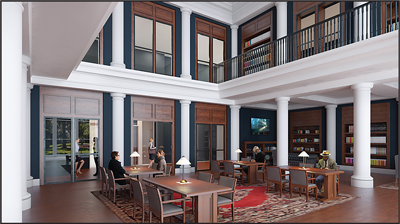
Welcoming Kids and Families to VMHC
Perhaps at the top of the list of audiences VMHC wants to engage are young people and families.
That’s where the Commonwealth Explorers exhibit comes in. It is 700 square feet of play that creates a connection to Virginia’s history and culture through the use of hands-on, interactive exhibits that are story-driven and relatable to children.
The family gallery is right between the two main permanent exhibits of Our Commonwealth and The Story of Virginia. “We want people to hear children. We want people to know that this is an alive and thriving place,” says Rodgers.
Here, families will have the opportunity to play and learn together at the Community Builders station. Carrie Lillard, a fourth grade history teacher from Rockingham County who serves on VMHC’s teacher advisory council, says this station “will feature different community builders who’ve made history in their profession.”
She adds that families will see some new names from Virginia history in this exhibit. “There are going to be people who aren’t necessarily in our state [learning] standards.”
The Commonwealth Explorers gallery also includes Virginia Nature, where families can explore Virginia’s native plants and animals, and Food Truck, which allows visitors to experience the scents of Virginia-grown ingredients, create their own fusion dish, and explore a variety of regional recipes representing cultural traditions from across the Commonwealth. At Inside the Museum, young people can learn about museum jobs and create their own museum display. This is an incredibly insightful way to promote museum careers to young people and their caregivers, especially in a region where history is such an important part of tourism.

We’ll See You at VMHC!
It will be a full-circle moment for my family when we return to VMHC for the grand re-opening festivities. Once again, we will see Hamilton’s work as part of an exhibition. Mending Walls RVA, which was launched in 2020 in response to the murder of George Floyd and social injustice that sparked uprisings in Richmond and around the world, will be highlighted in Our Commonwealth. The public art project was created to build empathy and connection through shared experiences of artists from different backgrounds. Learn more at MendingWallsRVA.com and view a map so you can see the murals in the area. Mending Walls: The Documentary is also streaming at VPM PBS.
As we explore the transformed VMHC and celebrate with friends, community members, and museum staff, I hope this can be another moment in time where we’re all filled with excitement, anticipation, and a sense of moving forward together while learning and growing from our shared experiences.
Images courtesy Virginia Museum of History and Culture


